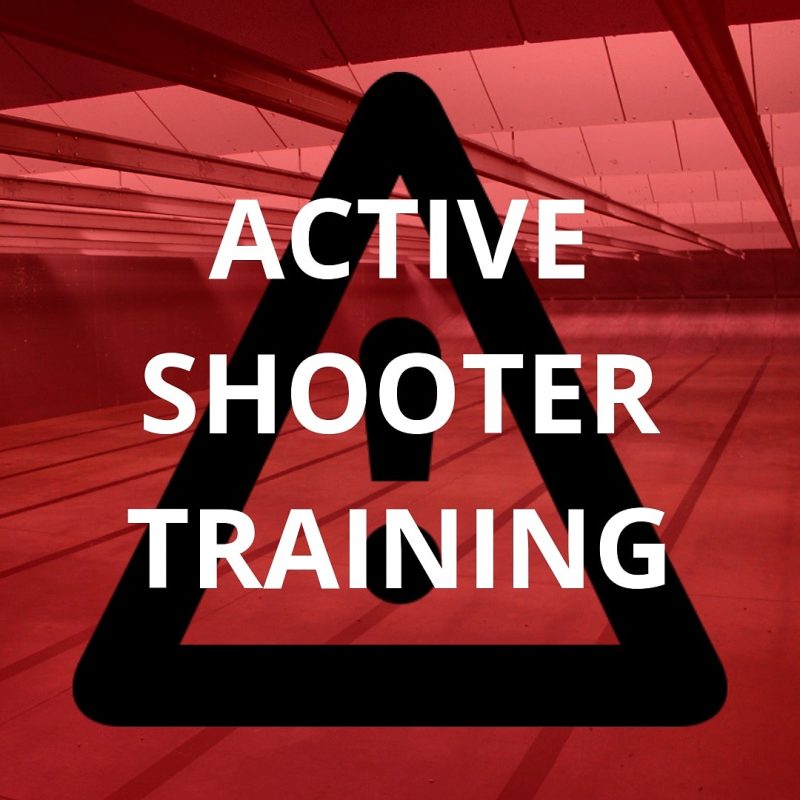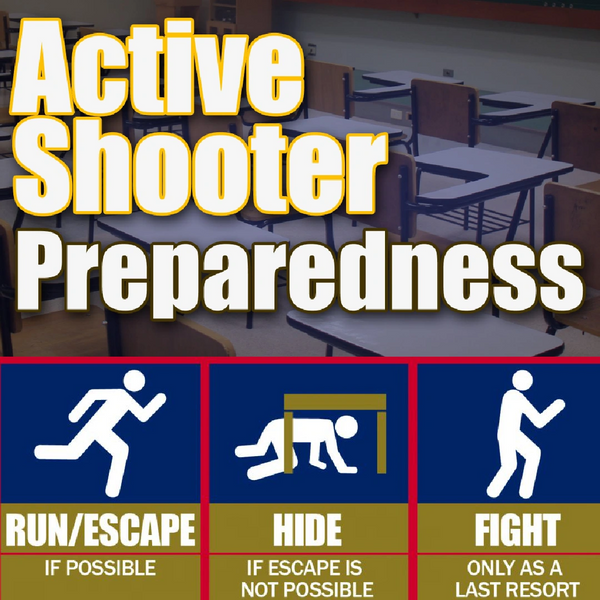The Significance of Active Shooter Training in High-Risk Atmospheres
The Significance of Active Shooter Training in High-Risk Atmospheres
Blog Article
Executing Energetic Shooter Training: Best Practices for Developing a Safe and Prepared Community Environment
As communities confront the unsettling truth of active shooter cases, the implementation of comprehensive training programs ends up being imperative. What are the critical components that can change a conventional training program into a robust version for neighborhood resilience?

Understanding the Requirement for Training
In an age marked by boosting events of physical violence in public rooms, comprehending the need for active shooter training has actually never been more crucial. The occurrence of mass capturings across various environmentsâEUR" such as colleges, workplaces, and purchasing centersâEUR" emphasizes the urgency for people and organizations to be planned for such emergency situations. Active shooter situations can unravel quickly, leaving little time for people to respond successfully. Consequently, comprehensive training campaigns can furnish individuals with the expertise and abilities to react decisively.
Additionally, the psychological effect of physical violence on people and areas can not be overstated. Training fosters a sense of empowerment and readiness, making it possible for individuals to really feel even more safe and secure in their surroundings. It additionally advertises a society of safety and security, where recognition and alertness end up being indispensable parts of life. The advantages of energetic shooter training expand beyond prompt action; they consist of improving communication protocols and improving total safety actions within companies.
Trick Parts of Effective Programs
Effective energetic shooter training programs integrate several crucial elements that enhance readiness and action capabilities. Extensive curriculum growth is necessary, guaranteeing that training web content is appropriate, evidence-based, and customized to the particular needs of the company or area. This consists of comprehending the dynamics of active shooter cases and the mental impact on people included.
Second, practical training scenarios ought to be utilized to imitate possible situations, enabling individuals to practice decision-making and action approaches in a controlled atmosphere. These drills promote muscle memory and develop self-confidence amongst individuals.
Third, a focus on communication procedures is vital. Developing clear lines of communication among police, emergency situation responders, and participants guarantees collaborated actions during an incident. Normal updates and refresher course courses assist maintain communication paths clear and efficient.
4th, recurring assessment and comments systems need to be incorporated into the training program - active shooter training. Examining the effectiveness of training with individual responses and performance metrics enables for continuous improvement
Lastly, cultivating a society of safety and readiness within the area motivates alertness and positive actions, guaranteeing that individuals are not only qualified but also taken part in maintaining a protected atmosphere.
Engaging Community Stakeholders

To successfully engage these stakeholders, it is important to communicate the purposes and advantages of the training. Hosting informative sessions can help clarify the training's objective, address concerns, and describe the functions each stakeholder might play. In addition, developing a stakeholder advisory committee can help with continuous useful site dialogue, enabling varied viewpoints and understandings to be integrated right into the training program.
Building connections with area leaders and organizations is also vital. Their support can boost outreach initiatives, increase involvement, and make certain that training is customized to the distinct needs of the area. Additionally, stakeholders can aid in distributing info and resources, enhancing the message of security and readiness.
Eventually, involving area stakeholders not just strengthens the training initiative but likewise cultivates a feeling of possession amongst homeowners, causing an extra resilient and educated area capable of reacting effectively to possible risks.
Training Shipment Approaches
Making use of a range of training shipment approaches is vital to accommodate the varied learning designs and demands of participants in energetic shooter training programs (active shooter training). Reliable training can take a number of forms, including lectures, hands-on simulations, on-line modules, and interactive workshops. Each method offers an unique objective and can boost the general discovering experience

Online modules offer flexibility and accessibility, making it possible for participants to find out at their very own rate. These can include video clips, tests, and conversations to evaluate understanding. Interactive workshops urge seminar and problem-solving, promoting synergy and communication abilities.
Including a mixed technique that combines these techniques not just improves the training experience but additionally makes sure that individuals are better prepared to respond successfully in the occasion of an active shooter scenario (active shooter training). By addressing various learning preferences, companies can create a more enlightened and responsive area
Continual Evaluation and Improvement
Normal evaluation and enhancement of active shooter training programs are essential to keeping their importance and performance. As threats advance, so need to the techniques and approaches employed in training. Continual evaluation makes certain that training content shows the most up to date intelligence on energetic shooter occurrences, integrating lessons gained from current occasions and readjusting for emerging fads.
To promote this process, companies ought to establish feedback mechanisms that include individual evaluations, expert testimonials, and event debriefs. Accumulating information on participant efficiency during drills and exercises is necessary, as it highlights locations needing improvement and educates future training sessions. In addition, engaging with police and emergency situation -responders can offer important understandings right into the usefulness and applicability of training protocols.
Consistently set up reviews of training materials and strategies must be mandated, fostering a setting of technology and versatility. Organizations must likewise find out here motivate a culture of recurring knowing, where staff participants feel encouraged to suggest adjustments based on their experiences. By devoting to constant assessment and enhancement, organizations not only improve the effectiveness of their energetic shooter training programs yet additionally enhance their overall commitment to safety and preparedness within the community.
Conclusion
To conclude, efficient implementation of energetic shooter training necessitates a detailed method that prioritizes neighborhood engagement and sensible simulations. By creating customized curricula, including diverse training methods, and promoting partnership among stakeholders, communities can boost readiness. Constant assessment and comments devices are essential for adapting programs to emerging risks, consequently reinforcing general safety and security. Inevitably, a commitment to ongoing training and renovation cultivates a culture of caution and preparedness, making certain a safer environment for all community members.
Report this page